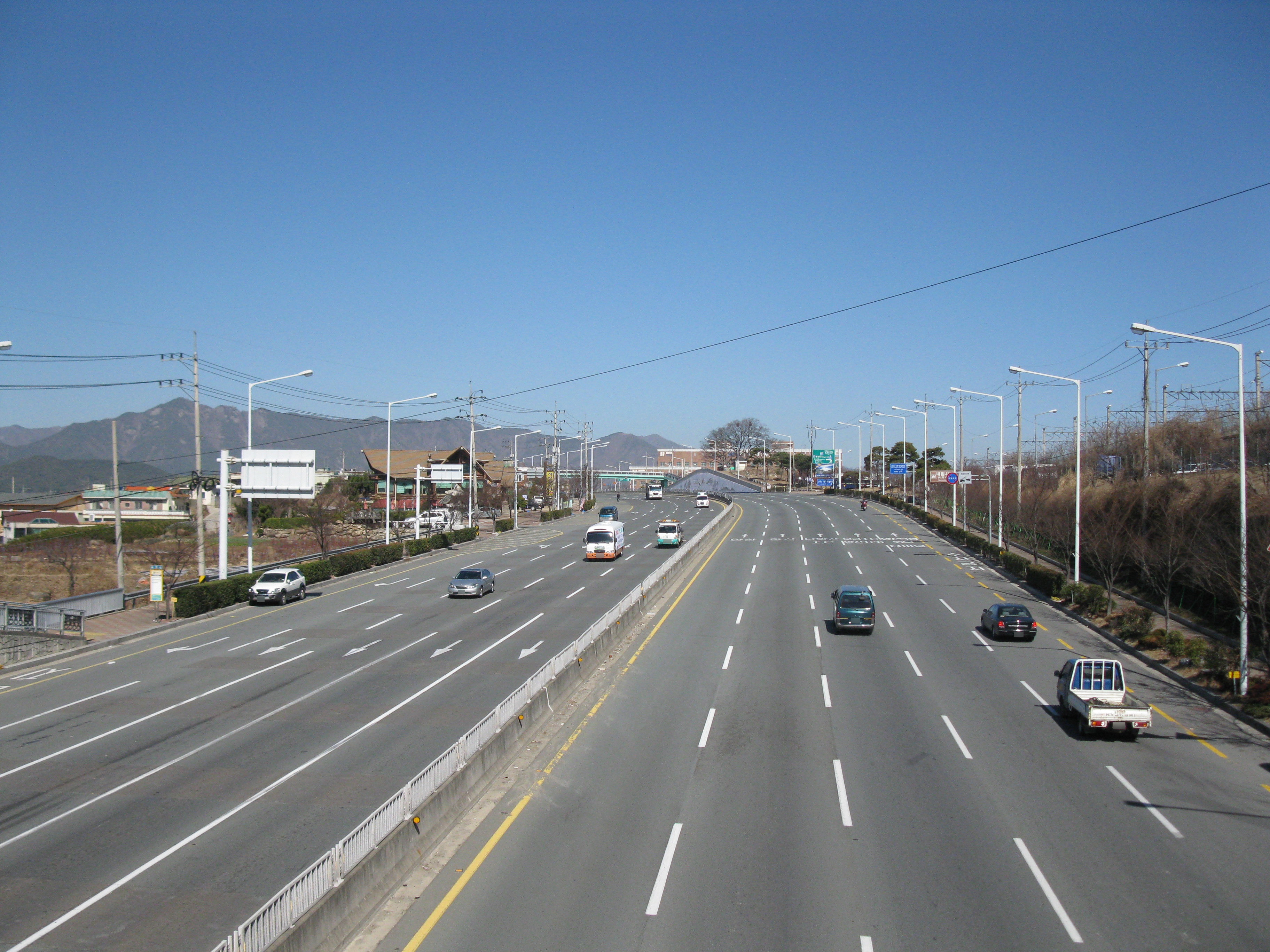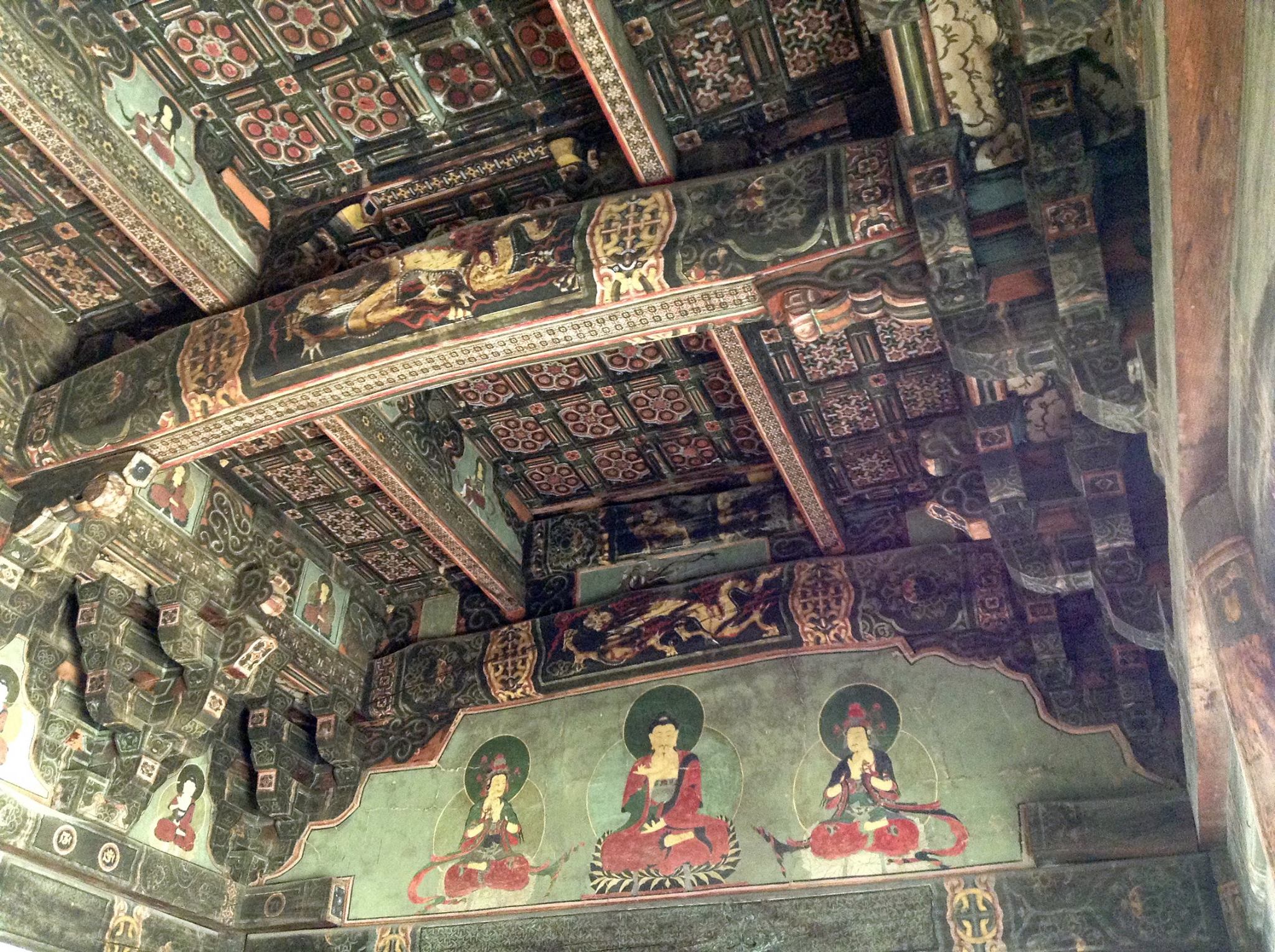|
Yangsan
Yangsan () is a city in Gyeongsangnam-do Province, South Korea. It borders Ulsan to the northeast, Gijang-gun and Geumjeong-gu in Busan to the southeast, Gimhae to the southwest, and Miryang to the northwest. City Hall is located in Nambu-dong, Yangsan-si. Administrative divisions Currently, Yangsan is made up of 1 Eup (administrative division), 4 Myeon (administrative division) and 8 Dong. A city flag Yangsan City means that it will open up as a future city with a bright, hopeful 21st century like magnolia, the flower of the city, and symbolizes Yangsan's strong will to build a first-class mass-production as the center of economy, society and culture in the eastern inland. Attractions * Tongdosa Temple *Naewon Temple *Yangsan Tower * Yangsan Stadium *Eden Valley Ski Resort *Hongryong Falls *Yangsan Wondong Plum Blossom Festival Climate Transportations Railways Yangsan has two stations on the Gyeongbu Line: Mulgeum station (물금역) and Wondong station (원동역 ... [...More Info...] [...Related Items...] OR: [Wikipedia] [Google] [Baidu] |
Busan Subway Line 2
Busan Metro Line 2 () is a line of the Busan Metro that crosses Busan, South Korea, from east to west, running along the shores of Haeundae and Gwanganli, and then north toward Yangsan. The line is long with 44 stations. The line uses trains that have six cars each. A ride through the entire line takes about 1 hour 24 minutes. Busan Metro Line 2 will be expanded from Jangsan Station to East Busan Tourism Complex in Gijang County which will be opened in 2021. (Currently Planned) History Plans to create the line began in 1987 and were finalized by 1991. During the construction of the third section of the line in 2001, the original plan to extend the route three stations beyond Yangsan Station was scrapped at the request of the citizens of Yangsan, with a new light rail line currently undergoing approval as an alternative. An older plan hoped to stretch the line four stations beyond Jangsan Station, but was scrapped due to cost concerns. The extension idea has gained new intere ... [...More Info...] [...Related Items...] OR: [Wikipedia] [Google] [Baidu] |
Yangsan Metro
Yangsan Metro (also known as Busan Metro Yangsan Line) is an under construction rubber-tyred metro line connecting Nopo station in Nopo-dong, Geumjeong District, Busan and Bukjeong station in Bukjeong-dong, Yangsan, South Gyeongsang Province, South Korea. Originally, it was promoted as the Nopo-Bukjeong line. It includes the project to extend the Busan Metro Line 2 to Yangsan Sports Complex station, and the line will connect the northern termini of Line 1 and Line 2. Rolling stock The line will use similar K-AGT driverless trains used on Busan Metro Line 4. The vehicle depot will be built in Seoksan-ri, Dong-myeon, Yangsan. List of stations See also * Busan Metro * Transportation in South Korea Transportation in South Korea is provided by extensive networks of railways, highways, bus routes, ferry services and air routes that traverse the country. South Korea is the third country in the world to operate a maglev train, which is an automa ... References {{South Korea r ... [...More Info...] [...Related Items...] OR: [Wikipedia] [Google] [Baidu] |
National Route 35 (South Korea)
National Route 35 is a national highway in South Korea connects Buk District to Gangneung. It established on 14 March 1981. 1981년 3월 14일 일부개정. Main stopovers  * Buk District
* Buk District
|
Jeungsan Station (Yangsan)
Jeungsan Station () is a station on the Busan Metro Line 2 in Mulgeum-eup, Yangsan, South Gyeongsang, South Korea. Station periphery *Jeungsan-ri *Yangsan Daebang Nobland Third Session *Yangsan Daebang Nobland Secondary Session *Gachon-ri * Lapiesta Yangsan History Jan. 10, 2008: Operating as an uninterrupted transit station with the opening of Busan Metro Line 2 September 24, 2015: Start of business References External links *Cyber station informationfrom Busan Transportation Corporation The Busan Transportation Corporation (Hangul:부산교통공사, Hanja:釜山交通公社) was established on January 1, 2006, following the abolition of the Busan Urban Transit Authority, which was founded in 1987. It currently operates the Busa ... * :ko:%EC%A6%9D%EC%82%B0%EC%97%AD (%EC%96%91%EC%82%B0) Metro stations in Yangsan {{SouthKorea-railstation-stub ... [...More Info...] [...Related Items...] OR: [Wikipedia] [Google] [Baidu] |
Gyeongbu Expressway
The Gyeongbu Expressway ( ko, 경부고속도로; ''Gyeongbu Gosokdoro'') (Asian Highway Network ) is the second oldest and most heavily travelled expressway in South Korea, connecting Seoul to Suwon, Daejeon, Gumi, Daegu, Gyeongju, Ulsan and Busan. It has the route number 1, signifying its role as South Korea's most important expressway. The entire length from Seoul to Busan is and the posted speed limit is , enforced primarily by speed cameras. History * February 1968 - Construction begins at the behest of South Korean President Park Chung-hee, who named Park Myung-keun in charge of construction. * 21 December 1968 - Seoul-Suwon segment opens to traffic. * 30 December 1968 - Suwon- Osan segment opens to traffic. * 29 September 1969 - Osan- Cheonan segment opens to traffic. * 10 December 1969 - Cheonan-Daejeon segment opens to traffic. * 19 December 1969 - Busan-Daegu (via Gyeongju) segment opens to traffic. * 7 July 1970 - The last segment, the mountainous Daejeon-Dae ... [...More Info...] [...Related Items...] OR: [Wikipedia] [Google] [Baidu] |
Jungang Expressway Branch
The Jungang Expressway Branch () is an expressway in South Korea. It connects Gimhae to Yangsan of South Gyeongsang Province. The expressway's route number is 551. It link Namhae Expressway(Gimhae) and Gyeongbu Expressway(Yangsan). and doesn't have any Service Area. History Information Lanes *Gimhae JCT ~ Daedong JCT : 4 Lanes *Daedong JCT ~ Yangsan JCT : 6 Lanes Lengths Speed limit List of facilities * IC: Interchange, JC: Junction, SA: Service Area, TG:Tollgate See also *Jungang Expressway *Expressways in South Korea *Transport in South Korea Transportation in South Korea is provided by extensive networks of railways, highways, bus routes, ferry services and air routes that traverse the country. South Korea is the third country in the world to operate a maglev train, which is an automa ... Expressways in South Korea Transport in South Gyeongsang Province Roads in South Gyeongsang {{SouthKorea-road-stub ... [...More Info...] [...Related Items...] OR: [Wikipedia] [Google] [Baidu] |
Yangsan Stadium
Yangsan Stadium is a stadium in Yangsan, South Korea South Korea, officially the Republic of Korea (ROK), is a country in East Asia, constituting the southern part of the Korea, Korean Peninsula and sharing a Korean Demilitarized Zone, land border with North Korea. Its western border is formed .... It is currently used mostly for football matches. The stadium holds 22,061 spectators and opened in 2002. http://cafe.daum.net/stade Stadium information References Football venues in South Korea Yangsan Venues of the 2002 Asian Games Asian Games football venues {{SouthKorea-sports-venue-stub ... [...More Info...] [...Related Items...] OR: [Wikipedia] [Google] [Baidu] |
Namyangsan Station
Namyangsan Station () is a station on the Busan Metro Line 2 in Mulgeum-eup, Yangsan, South Gyeongsang, South Korea. External links *Cyber station informationfrom Busan Transportation Corporation The Busan Transportation Corporation (Hangul:부산교통공사, Hanja:釜山交通公社) was established on January 1, 2006, following the abolition of the Busan Urban Transit Authority, which was founded in 1987. It currently operates the Busa ... Metro stations in Yangsan Railway stations opened in 2008 {{SouthKorea-railstation-stub ... [...More Info...] [...Related Items...] OR: [Wikipedia] [Google] [Baidu] |
Mulgeum Station
Mulgeum station is a railway station on the Gyeongbu Line located in Mulgeum-ri, Mulgeum-eup, Yangsan-si, Gyeongsangnam-do, Korea. It is the starting point of the Yangsan Line. Mugunghwa-ho and ITX-Saemaeul stops on 40 one-way trips, 20 up and 20 down, each day. History 1905. 1. 1. Open business at normal station 1939. 6. 1. the completion of a new history 1968. 12. 30. Completion of cargo warehouse 1971. 3. 2. the installation of a cargo ship 1997. 10. 1. Suspend the handling of the parcels (Railway Rail transport (also known as train transport) is a means of transport that transfers passengers and goods on wheeled vehicles running on rails, which are incorporated in Track (rail transport), tracks. In contrast to road transport, where the ... Administration Notice No. 1997-51) 1999. 1. 1. Stop handling parcels (Railway Public Notice No. 1998-72) 2003. 9. 23. the completion of a new history 2006. 5. 10. Opening of a mass-oxidized ship (between Mulgeum Station and Ya ... [...More Info...] [...Related Items...] OR: [Wikipedia] [Google] [Baidu] |
South Gyeongsang Province
South Gyeongsang Province ( ko, 경상남도, translit=Gyeongsangnam-do, ) is a province in the southeast of South Korea. The provincial capital is at Changwon. It is adjacent to the major metropolitan center and port of Busan. The UNESCO World Heritage Site Haeinsa, a Buddhist temple that houses the '' Tripitaka Koreana'' and tourist attraction, is located in this province. Automobile and petrochemical factories are largely concentrated along the southern part of the province, extending from Ulsan through Busan, Changwon, and Jinju. Etymology The name derives ; . The name derives from the names of the principal cities of Gyeongju () and Sangju (). History Before 1895, the area corresponding to modern-day South Gyeongsang Province was part of Gyeongsang Province, one of the Eight Provinces of Korea during the Joseon dynastic kingdom. In 1895, southern Gyeongsang was replaced by the districts of Jinju in the west and Dongnae (modern-day Busan) in the east. In 1896, they wer ... [...More Info...] [...Related Items...] OR: [Wikipedia] [Google] [Baidu] |
Tongdosa
Tongdosa (, "Salvation of the World through Mastery of Truth")Le Bas, Tom :"South Korea" pg 244, Insight Guides, 8th edition 2007 is a head temple of the Jogye Order of Korean Buddhism and in the southern part of Mt. Chiseosan near Yangsan, South Gyeongsang Province, South Korea. Tongdosa is one of the Three Jewels Temples and represents Gautama Buddha. (Haeinsa, also in South Gyeongsang Province, represents the dharma or Buddhist teachings; and Songgwangsa in South Jeolla Province represents the sangha or Buddhist community.) Tongdosa is famous because there are no statues outside of the Buddha at the temple because the "real shrines of the Buddha" (relics) are preserved at Tongdosa. Courtyards at the temple are arrayed around several pagodas that house the Buddha's relics. Origins Tongdosa was established by the monk Jajang-yulsa after returning from Tang China in 646 AD, during the reign of Queen Seondeok of Silla. It thrived throughout the Later Silla and Goryeo perio ... [...More Info...] [...Related Items...] OR: [Wikipedia] [Google] [Baidu] |
Wondong Station
Wondong station is a railway station on the Gyeongbu Line in Won-ri, Wondong-myeon, Yangsan, South Gyeongsang, South Korea South Korea, officially the Republic of Korea (ROK), is a country in East Asia, constituting the southern part of the Korea, Korean Peninsula and sharing a Korean Demilitarized Zone, land border with North Korea. Its western border is formed .... Mugunghwa trains stop 22 times a day (11 up and 11 down). Originally, there were no pedestrian overpasses, but the bridge was built in the 1980s due to frequent deaths. In spring, the Wondong Maehwa Festival is held in Wondong-myeon. External links * :ko:원동역#cite note-1Korea Transportation Corporation Railway stations in South Gyeongsang Province {{SouthKorea-railstation-stub ... [...More Info...] [...Related Items...] OR: [Wikipedia] [Google] [Baidu] |




